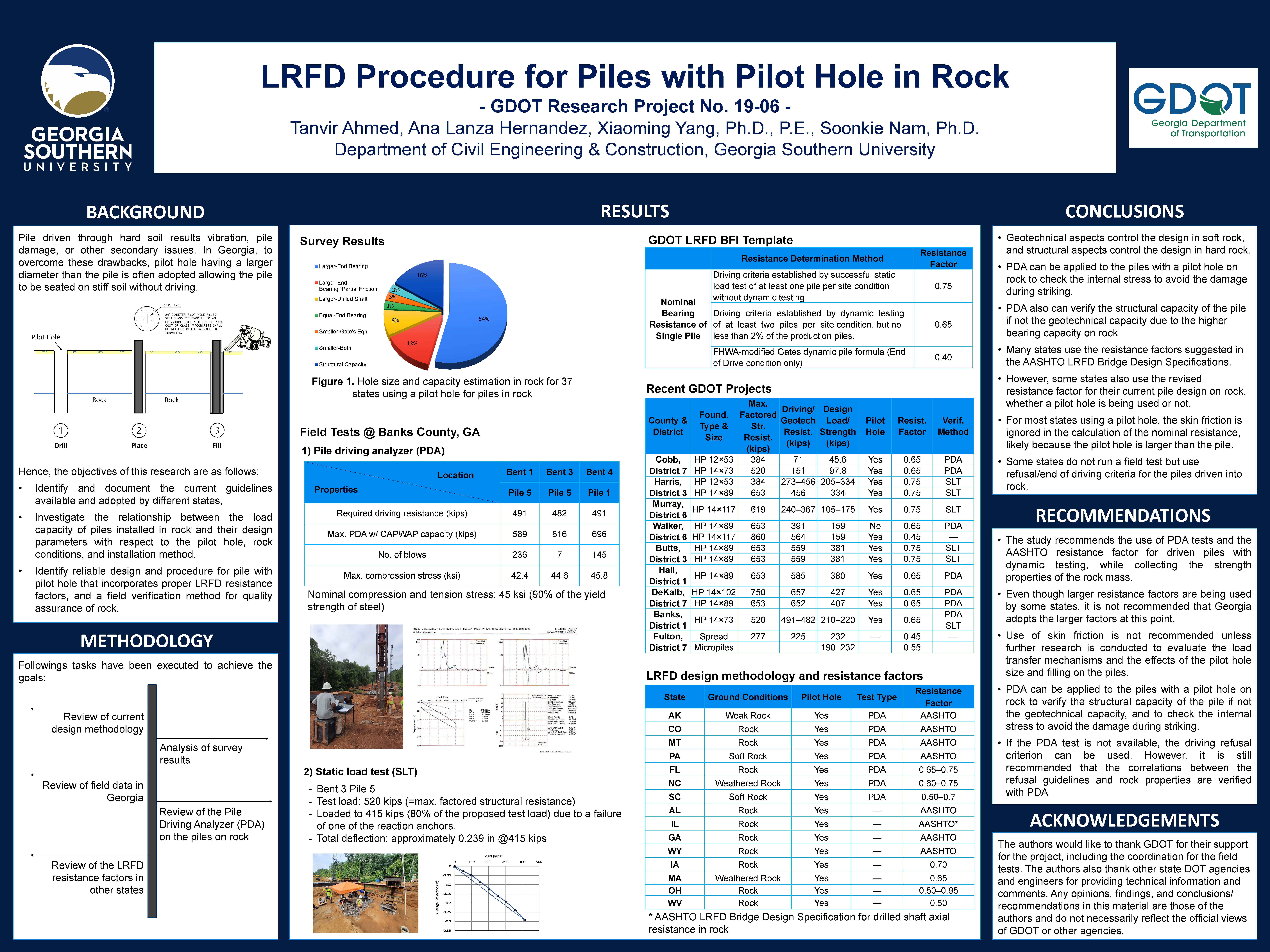STRATEGIC PRIORITIZATION IN BRIDGE ASSET MAINTENANCE THROUGH DATA DRIVEN LONG-TERM ASSET VALUATION WITH ADDITIONAL EMPHASIS ON PROMOTING GDOT’S PARTNERSHIPS WITH COUNTIES
PI: Mi G. Chorzepa
Co-PI(s): Stephan Durham
Institution(s): University of Georgia
Abstract
The purpose of this project is to find ways to optimize bridge and transportation asset management and maintenance in the state of Georgia. This will be accomplished in a multitude of ways, but this project looks to bridge the gap in resources and knowledge between not only GDOT and local counties, but also among the counties themselves. To do this, this team will be developing an inspection guide, a resource guide, and an asset life-cycle analysis plan. Bridging the resource and knowledge gap between GDOT and local governments, as well as county to county, will go a long way towards fixing the divide between the conditions of state-owned transportation assets and local transportation assets.

Please comment below with any statements or questions you may have. Also let GTI if you would be interested webinars or presentations on similar topics.








 Dr. Randall Guensler Alexandra Frackelton Alice Grossman
Dr. Randall Guensler Alexandra Frackelton Alice Grossman